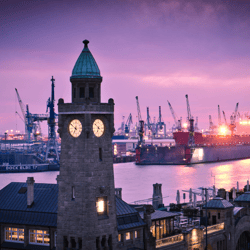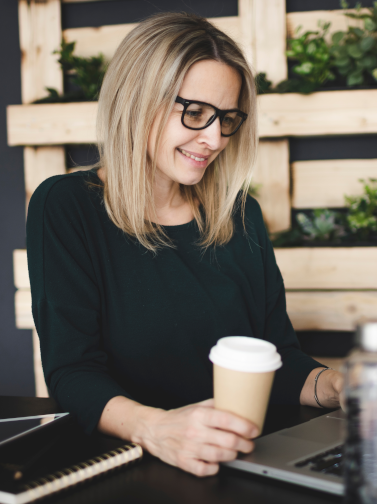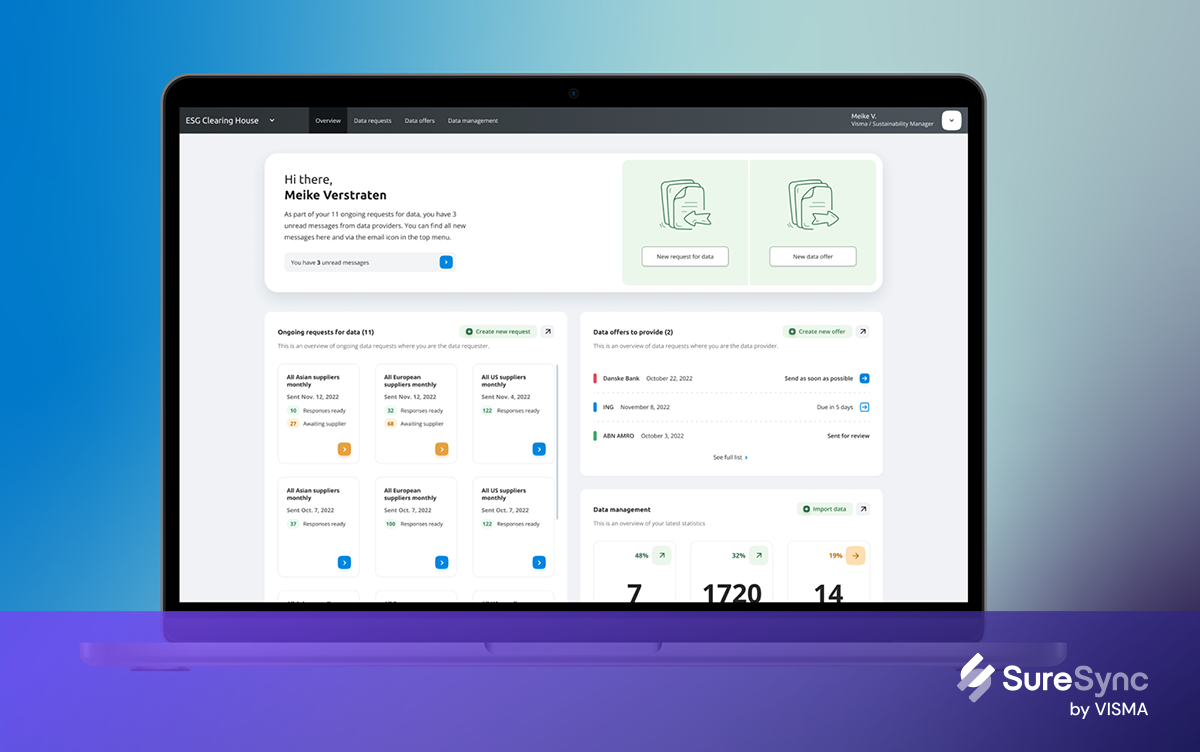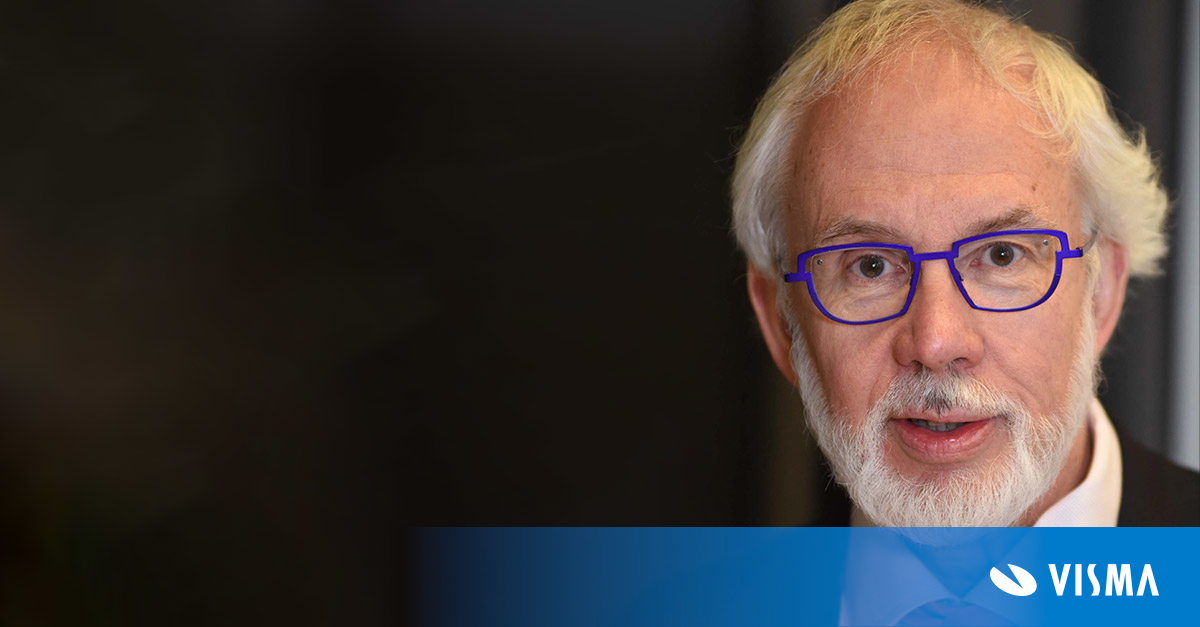Rethinking finance for the circular economy...
........an interview with Diane Zandee
When we think of supply chains, we often think of a linear process. Raw materials get sourced, transported and converted into products. At the end of their lifecycle, these products are most likely disposed of. This way of thinking has dominated our economic models for centuries. But a new wave of academics is breaking the mould. We spoke with Diane Zandee, a researcher and consultant who focuses on the circular economy and its implementation in finance.
Diane, you have been working in finance and consulting for over 20 years. Can you tell us about your professional background?
.jpg?width=259&name=Diane%20Zandee%20(2).jpg) I have a background in business administration. I studied finance and became a chartered controller. I worked in finance and consulting for many years, focusing on new business models in the internet sector.
I have a background in business administration. I studied finance and became a chartered controller. I worked in finance and consulting for many years, focusing on new business models in the internet sector.
I also had interesting jobs at Eneco, NS (Dutch Railways), and Schiphol, focusing mostly on strategic alignment with a societal focus. In all of these jobs, I was able to focus on stakeholders and sustainability. At Eneco, for instance, I worked as Procurement Director. My mission here was to drive sustainable procurement and build new business models with suppliers.
Based on my experience in the energy and utilities industry, I realised it was very difficult to apply aspects of circularity in finance. But it’s obvious to me that we need to. This drove me to start a PhD project on the fuzzy subject of combining sustainability and finance.
Your PhD focuses on decision making in the Circular Economy. Can you tell us a bit more about your academic work?
As I mentioned, this started with a big puzzle: combining finance and sustainability. It’s a broad subject, so I narrowed my focus on the circular economy. I am focusing on the accounting aspects of the circular economy. I’ve spent a lot of time researching and questioning organisations about where they start, what their goals are and achieving progress over time. This has taught me how decision making typically goes. Often, for instance, it starts with a vision of scarcity but not from the perspective of financial benefits and how sustainability can drive profitable growth.
You are also an entrepreneur now. Why did you leave a successful career to start your own business?
Controllers and CFOs are not commonly taking part in sustainability projects and innovation. I think they should do more. That’s why I decided to start studying the circular economy and bring my knowledge to more than one company.
I am now a consultant and entrepreneur and I am a member of several work groups with accountants and bankers. It’s an exciting time because the market is ready for this. A lot of companies, banks and investors are searching for a new way forward.
We have a lot to do and we are ready to scale. To scale you need financing, and I have the knowledge of both.
You are a member of the Dutch “Coalitie Circulaire Accounting” (Coalition for Circular Accounting). Can you tell us about this coalition?
Yes. This is a coalition collaborating with the Dutch Accountants Association. We have an expert panel that analyses circular economy business cases. For example, we look at how accounting supports or doesn’t support sustainable decision making and how the circular economy should be interpreted from an accounting standpoint.
Accounting is the language of the financial world. We use it for risk assessments, contracts, and other business-related activities but it doesn’t help much when it comes to circular economy propositions because it takes longer to make these profitable. In time, you do get lower costs but you have to invest a lot upfront. You need to create a network. Linear accounting tools do not support the circular economy.
Circularity is a familiar term for most of us, but we hardly encounter the topic in daily life. Can you explain what circularity is?
We don’t have a single definition for the circular economy. I often explain it as creating loops to use materials in a way that minimises waste and CO2 emissions. When you don’t have to produce new products because they have a longer lifetime, you cut out steps in the value chain. This enables nature to restore its function and we achieve more balance over time.
When you operate in a circular chain, everyone benefits. But there is always someone who has to come up with the investment first. It’s hard to get it flying. Do you agree with this statement?
It takes a lot of trust from your partners from the start and it requires more collaboration than we are used to in our linear economy. We need connections for the long run. A lot of things are different in a circular economy, including the incentives. For example, return logistics (a step that is necessary to have a closed loop) takes more effort and should be priced accordingly. The payout is greater long-term, because you can collect unused products and use components instead of sourcing raw materials. But it takes time to see the benefits.
It also requires a shift in mindset from the manufacturers’ point of view. They need to re-invent themselves and take responsibility for their products’ design. This change takes time.
We’re starting to see more pay-per-use and refurbishment models, especially in B2B. What about B2C models?
For less expensive daily products, it’s harder to change behaviours. Consumers need to change their understanding of ownership. Pay-per-use will require a big change and it might not work for every product.
The Dutch government wants the Netherlands to have a circular economy by 2050. Is this achievable?
I am an optimist but I also know it will be challenging. We need to believe in it to make it work. There is a lot of research into market transitions at the moment. All of these studies show we need everyone involved: companies, financial institutions, knowledge institutions, NGOs, governments, etc. We need everyone on board to make this transition happen.
Where should we start?
Legislation, clear goals and timelines provide direction and will help companies make the change. The biggest challenge is that we are still working with linear tools to create new business models and products, and in some cases, legislation is too linear too. For example, waste legislation often makes it impossible to reuse waste or even transport it.
It requires creativity and innovation to implement circularity. We need to rethink the structure of the economy and what’s important. Everyone should start working in their own field of influence. Companies need to address their own blocking, linear issues and work on circular economy alternatives. Governments should focus on legislation and so on.
Supply Chain Sustainability is a Matter of Persistence
 Large scale events like the pandemic and the war in Ukraine have exposed the vulnerability of global supply chains. Even small incidents like the Suez canal blockage can have many ripple effects. This goes to show how complex supply chains really are. At the same time, pressure is mounting to mitigate their sustainability impact. We have all heard about the problem: from the large scale transport of animal feed between South America and Europe to the consequences of fast fashion. The big question is: how can business leaders make conscious choices to embrace sustainability in such a complex landscape? We spoke with Professor Julia Hartmann to address this question. Read the full conversation here
Large scale events like the pandemic and the war in Ukraine have exposed the vulnerability of global supply chains. Even small incidents like the Suez canal blockage can have many ripple effects. This goes to show how complex supply chains really are. At the same time, pressure is mounting to mitigate their sustainability impact. We have all heard about the problem: from the large scale transport of animal feed between South America and Europe to the consequences of fast fashion. The big question is: how can business leaders make conscious choices to embrace sustainability in such a complex landscape? We spoke with Professor Julia Hartmann to address this question. Read the full conversation here
Which sectors of the economy are most promising when it comes to circularity? I know you’ve done some work on building and construction, for instance.
Every sector has a role to play in this change. Building and construction is an important one because if we want to have a circular economy by 2050, we also need to think about what we are building today. These buildings need to be durable and created with materials we can recycle in the future.
Food is another important sector. We have a lot of food waste today. This cannot go on for much longer. Logistics is paramount too. For circular business models, you need to have the right materials in the right place, at the right time. Manufacturing companies are also equally influential in designing products for circularity. For all of them, the guiding principles should be the same: reducing CO2 emissions and phasing out waste.
A 2018 Policy brief from the Dutch Bureau for Economic Policy Analysis states that the three main barriers for a circular economy are:
- That there is no price tag on ecological damage
- That the pace of innovation is too slow
- Market power and geopolitics
Do you agree with this or has the landscape shifted? Do we have fewer barriers now?
There’s a lot of research being done on these barriers but they are not yet solved.
Slow innovation is one I hear a lot. But I think there’s a lot being done on the technology-side. What we are lacking is innovation in new business models. The main issue is that we are still earning most of our money with linear models. We need to change this situation with urgency. Legislation will help. Sometimes bad situations, like energy scarcity, can also guide us into a brighter future.
The current energy crisis is a good example. I see a lot of discussions going on online about fossil fuel subsidies. Should governments do this or should we “pay the real price?” Part of the market transition will involve discouraging the old situation and helping frontrunners. The effort we put into the energy transition should be greater.
In an interview with Nyenrode Business University you state, regarding the sustainable transition: “We need to look beyond keeping shareholders happy and include stakeholders such as customers and suppliers.” This means we need a paradigm shift towards cooperation instead of competition, and information sharing and transparency in supply chains. What is your opinion on this?
I think having a network of reliable partners is essential to be successful in a circular economy. Shareholders who are focused on a long-term, sustainable future and not just short-term profits, also recognise this. Sustainable companies are more aware of what stakeholders want and more agile to adapt. This creates a more stable business environment. Collaborating with customers and suppliers to build a closed loop value chain is important. Trust is important to build this long term future.
Tony Juniper was one of the first authors to bring the value of nature services to a broad audience in his 2013 book “What has nature ever done for us?” Lately, we have seen more and more discussions about “ecosystem services” that can be priced. As a CFO with a controlling background, do you believe that these are positive developments?
Most products are not priced well because they leave out the externalities. I think pricing things like CO2 helps us create some awareness of sustainability issues. Some companies are incorporating carbon pricing in internal decision making, for instance. I think this is a good development because it makes you aware of the importance of weighing sustainability in your decisions.
But the reality is that it’s hard to do with all aspects of sustainability. Think about the social aspects, for example. How would you price the life of a family in Bangladesh who depends on your supplier for income? You cannot put a price tag on everything. Instead, you need to be aware if there are issues in your value chain, such as labour rights violations, and you need to do something about them.
You’ve been a CFO, so you know more about reporting compared to most people. What tips would you like to give organisations when it comes to sustainability reporting? Especially now that there is a whole range of regulations coming up, including the Corporate Sustainability Reporting Directive and the German Supply Chain Due Diligence Act to name a few.
The essence of all these regulations is to create transparency into non-financial aspects. Organisations will become more vulnerable to criticism if they don’t achieve their CO2 reduction targets. This is good because it makes them aware of their social responsibility.
All of these guidelines are meant to prevent greenwashing. They will create a basic information layer and transparency between sectors and companies.
I would advise companies to start thinking about the metrics they need to have in place. It’s a lot of work and it’s a tough job to get all the metrics implemented and measure them every year, consistently. Building an internal practice for non-financial reporting is critical. Just like you do with the financial figures.
Why is sustainability, and circularity specifically, such an important topic for you personally?
I enjoy being in nature and I appreciate clean air. I hope that my children will enjoy this as much as I did growing up. It’s already a lot more limited than it was in my youth.
The biggest challenge for us in the future will be to balance prosperity with sustainability. We need to be more conscious about our choices. In my personal life, I have the most influence in the things I do as a consumer and in my work. That’s why I changed my professional focus to the circular economy. When we try to influence our work environment, we can change things for the better.





